The Real Story
Before we say goodbye, let’s return to these major projects and examine why they were abandoned. And as we often say, good ideas never die at Disney, so we’ll make the connections you’ve likely noticed and explore where the ideas have resurfaced in one form or another. Luckily, our extensive collection of in-depth features and write-ups can provide all the information you could possibly want, so we'll link to other features here, as well (all of which will open in a new tab, so read away!)
Main Street USA
Neither Liberty Street nor Edison Square came to pass, sadly. Both simply came about at a time when Disneyland’s itinerary was packed. Both were officially announced in 1957 when the park was brand new. Put simply, they were overshadowed by the work Disney Imagineers were doing on Tomorrowland. In 1959 – right about the time that the Main Street extensions were due – Disney opened the Monorail, Matterhorn Bobsleds, and Submarine Voyage, all on the same day. Those three E-tickets (the first rides ever to gain that designation) were so grand, the park was rededicated at their opening. A few low-key exhibits couldn’t compete, and time passed on.
Liberty Street obviously got a second lease on life. While the Hall of Presidents envisioned for Disneyland was filled with wax figures of the commanders-in-chief, the advent of Audio Animatronics technology in 1960 (The Enchanted Tiki Room) and expansion in 1964 (Great Moments with Mr. Lincoln) doubtlessly made Imagineers glad they’d waited. Mr. Lincoln was relocated to Disneyland after the 1964 – 65 World’s Fair in New York, finding a permanent home in the Opera House on Main Street. When Magic Kingdom opened in 1971, it expanded the concept of Liberty Street and placed a themed land called Liberty Square along the Rivers of America, leaving New Orleans Square out entirely. Magic Kingdom's Liberty Square is a colonial harbor that very closely resembled the elements of Disneyland’s Liberty Street, including the Hall of Presidents, featuring Animatronics and not wax figures.
Edison Square didn’t come about, either, though its DNA lived on, too. At the same 1964 – 65 World’s Fair where Mr. Lincoln debuted, General Electric finally got to sponsor a Disney attraction: the Carousel of Progress. The revolutionary rotating theater offered a more efficient and attractive way to move guests through time, and the Audio Animatronic family therein was much more inspiring than the simple Wilbur K. Watt would’ve been. Ultimately, this is another example of a lucky miss. The Carousel of Progress is almost certainly better than “Harnessing the Light” would’ve been, if only because (as both shows agree) progress simply makes things easier to do.
Adventureland
Eisner’s insistence that the movies settle into Disneyland was controversial, but the openings of Captain EO and Star Tours (in 1986 and 1987, respectively) proved that Disney and George Lucas could work wonders together. An Imagineering team was hard at work on Indiana Jones and the Lost Expedition, well into the scale-model building phase when another project caught Eisner’s eye: the ability to re-use the cast of a hundred Audio Animatronics animals from the shuttered America Sings carousel show for a project called Zip-a-Dee River Run. Eisner liked the project on the caveat that it be renamed to promote Disney's 1984 film Splash.
Obviously, the rest is history. Splash Mountain went forward and the Lost Expedition stayed lost. About five years later, though, advancing technologies did allow Tony Baxter and his Imagineering team to bring at least one portion of the Lost Expedition – the EMV Jeep ride – to life. When it did, it necessitated the re-routing of the Jungle Cruise and the aging and rusting of the ride, as the whole land was cast in a 1930s storyline and a single, overarching continuity just as Lost Expedition had called for.
Even if the entire Lost Expedition project didn’t surface, the ride Disneyland did get – Indiana Jones Adventure: Temple of the Forbidden Eye – is often renowned as the best modern dark ride in the world. Its scale doesn’t match that envisioned by the Lost Expedition, but its hard to imagine that the Lost Expedition ride could’ve had a more stunning and unique story than Forbidden Eye does. And Temple of the Forbidden Eye did try to emulate one piece of the Lost Expedition: a major portion of the ride takes place in a massive, single room teetering along rocky cliffs and wooden suspension bridges over pits of lava.
Frontierland
Disney really did come to terms with the weakening of Frontierland, which appeared dry, boring, and slow to audiences of the 1970s. The massive expansion and world building that would’ve included Discovery Bay and Big Thunder Mountain was announced in 1976 with an official opening date in 1979. The reasons for the land’s eventual cancellation are complex and chronicled quite fully in our in-depth feature on the land that could’ve been, but suffice it to say that the land’s cornerstone ride just happened to be based on a film that tanked at the box office, which thereby shifted Hollywood’s attitude toward fantasy for decades. The one piece of the project that did sneak through was Big Thunder Mountain, which opened alone in 1979. Though it’s still a favorite, we can’t help but think that it somehow is more complete when put in the Discovery Bay context. Ah well.
Disney fans still clamored for Discovery Bay to become reality, arguing (convincingly) that if people still want the land more than 40 years later, then it must be timeless… and that’s a pretty convincing argument for its eventual construction. So far, the ingredients of the land have made their way into Disney Parks across the globe (primarily in a very unique Tomorrowland built in Paris) but never at Disneyland. Fans held out hope for a long time, but in 2016, the land earmarked for Discovery Bay 40 years earlier was flattened to become a Star Wars themed land that it seems may change Disneyland forever.
As for Geyser Mountain, the project was designed almost exclusively as an excuse to bring a version of the Twilight Zone Tower of Terror technology to Disneyland. Giving it a Western overlay and placing it in Frontierland had the double-sided benefit of propping up Frontierland and drawing guests back to Disneyland from the ultra-crowded Disney’s California Adventure.
Problem is, Disney’s California Adventure wasn’t crowded at all. The park was Disney’s first certifiable theme park failure as visitors adamantly rejected the entire park. We wrote an entire in-depth feature on the disastrous mess that California Adventure was when it opened that’s well worth a read, but suffice it to say that it turned out that California Adventure needed a boost more than Disneyland did.
Geyser Mountain was due to open in 2003. Instead, the Twilight Zone Tower of Terror opened at California Adventure in 2004, more or less eliminating the possibility of Geyser Mountain ever being built in Disneyland.
When it was cancelled in California, Disneyland Paris considered the ride for their own Frontierland, just using a massive steel tower instead of a rocky peak (above). But ultimately their second park, Walt Disney Studios, needed an even bigger boost than California Adventure, so it got a clone of Tower of Terror, too. Perhaps someday, either the mountainous version from California or the steel version from Paris could end up in Hong Kong Disneyland's Grizzly Gulch, since that park doesn't have a Tower of Terror or any appropriate place to put it.
Fantasyland
Dumbo’s Circusland was part of the Discovery Bay package, so when Discovery Bay was cancelled, so was the little mini-land based on classic cartoon characters. That meant that Dumbo and Casey Jr. stayed where they are in Fantasyland. Neither the Mickey Mouse nor Circus Disney dark rides were ever built. Pinocchio’s Daring Journey was, though, when Fantasyland received a complete floor-to-ceiling overhaul in 1983.
The concept behind Circusland lived on in a few ways. First of all, it almost certainly was the direct inspiration for Mickey’s Toontown at Disneyland. Magic Kingdom in Florida wanted a Toontown of their own, and built Mickey’s Toontown Fair, a county fair style “summer home” for the characters that was even closer to Circusland in terms of style.
It all came to a head when Magic Kingdom’s New Fantasyland opened in 2012. New Fantasyland skillfully redesigned and redressed the cartoony, cheap-looking remains of Mickey's Toontown Fair into a reverent, thoughtful, and detailed sub-land within Fantasyland called Storybook Circus. The mini-land includes a relocated Dumbo the Flying Elephant, a Casey Jr. water playground, and a turn-of-the-century trolley park circus style that is no doubt an evolution of the Circusland concept.
Candy Mountain was abandoned when Walt and his early Imagineers simply agreed that there was something strange and unappealing about the ride… something a little sickly and off-putting. Allegedly, they tried to make a model out of real candy, and when it melted, they all saw the error of their ways. Matterhorn Bobsleds was built in its stead. A model of Candy Mountain is on display in the window of the Candy Shop on Buena Vista Street at Disney California Adventure – one of the delightful details that earns such praise for the reborn park and its thoughtful entry.
The Enchanted Snow Palace designed by Marc Davis – of Pirates and Haunted Mansion fame – never materialized at Disneyland for a number of different reasons. For one, it was envisioned in 1975, right as the steel roller coaster began to dominate theme parks. Disneyland rushed Space Mountain (1977) and Big Thunder Mountain (1979) into production. For another thing, the Snow Palace simply didn’t have a very strong story to stand on. While it was beautiful, it lacked the humor or compelling cast of Pirates or Haunted Mansion, and simply didn’t seem like a must-have at the time, and it melted away. Now, any Snow Queen attraction will likely take a very different form…
As for Submarine Voyage: Atlantis Expedition, the Submarine Voyage closed in 1998 – shortly after the “grand” opening of the abysmal New Tomorrowland (some celebration to close a headlining ride!). But when Atlantis: The Lost Empire opened in 2001, it failed to make an impression. To be fair, Disney hadn’t done anything to the lagoon in the three years between, so it might’ve just been an excuse to close the low-capacity, high-operational-cost ride. It was rescued by park president Matt Ouimet and re-opened as the Finding Nemo Submarine Voyage in 2007. You can read the water-logged story of the Submarine Voyage rides in California and Florida here.
Tomorrowland
As long as Disney Parks have been around, so too have Imagineers been trying to decide how to build a future they can't seen yet. In the 1990s, Imagineers were challenged to create timeless Tomorrowlands for each Disney Park that would never need updated. Their answer in California was the ambitious Tomorrowland 2055 that we dissected in our own in-depth feature.
Truthfully, an objective eye can probably see that if it had been built, Tomorrowland 2055 would look pretty tired today… even a “timeless” Tomorrowland devoid of real science is a pawn to the whims of pop culture, and a gritty industrial alien spaceport with a Chuck E. Cheese style Plectu’s Intergalactic Revue is pretty concretely of the 1990s… It’s a moot point anyway, because after the financial fall of Disneyland Paris, Michael Eisner became wary of any and all large-scale projects, and called for Tomorrowland 2055 to be scaled back – to find a cheaper, less risky way to make a Tomorrowland that would last forever.
The Imagineering team who’d been hard at work building Alien Encounter was told that their attraction would not debut at Disneyland as they’d planned, but instead would go into the New Tomorrowland already under construction at Magic Kingdom. We chronicled the terrifying true story of Alien Encounter in this in-depth feature, but long story short, the attraction was far too violent for the fairytale park, where it closed in 2003 to be replaced by what many consider the most flubbed attraction ever.
Fans still imagine that if it had opened at Disneyland where it was meant to, Alien Encounter would still be around, as it’s a fine fit with Disneyland’s more PG-13 rides like Indiana Jones Adventure and Star Tours, which are absent from the G-rated Magic Kingdom.
The theatre that had been prepped for the attraction at Disneyland was instead turned into a pizza restaurant. That’s just one of the gut-wrenching mistakes that went into Tomorrowland 1998, a disastrous and shocking low-budget renovation that we singlehandedly blame for the fall of Walt’s Tomorrowland, as chronicled in that in-depth look at the closing of the Peoplemover and the gradual faltering of Tomorrowland over time.
The Ideas Live On
As you can see dozens of times on this page alone, it probably is true that good ideas never die at Disney. They always re-appear where you least expect them. If our walk through Possibilityland has inspired any thoughts in you, we hope it’s the opportunity to look objectively at how very different Disneyland could look but for a choice here and a decision there. Perhaps some of the possible projects are better off left behind, while others may be missed opportunities that would've made the park stronger even today.
Now it’s your turn. Let us know! Which of these concepts are you glad we missed? Which would you still love to see come to life? And let us know: are there any other Disney Parks you think would look very different if their Possibilities came to life? We sure think so. The Possibilities are endless.
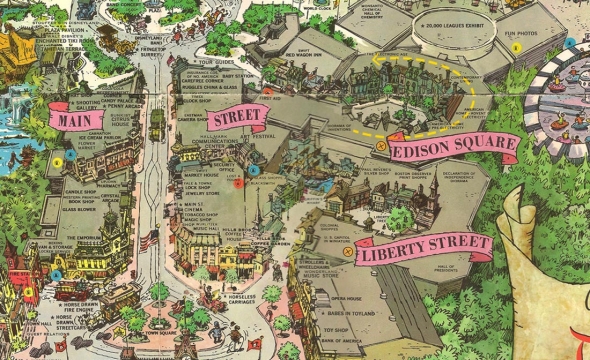
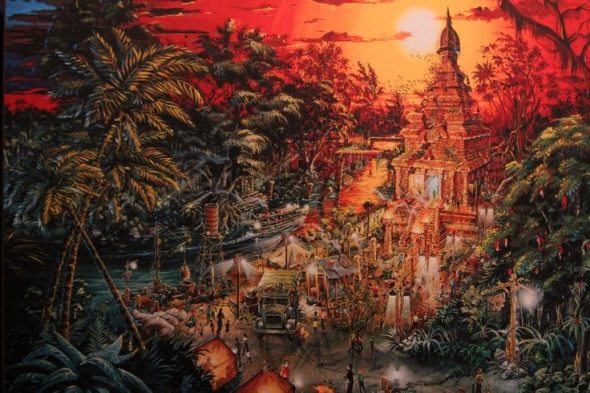
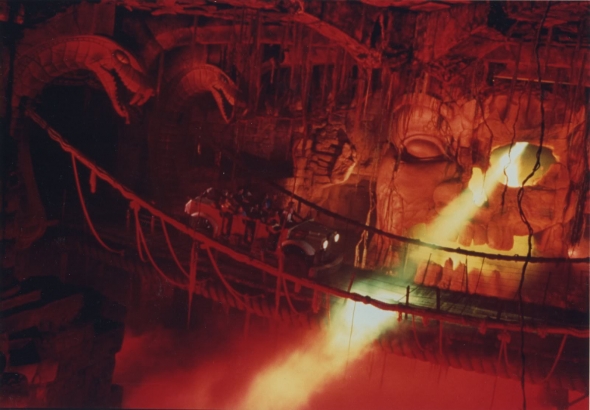
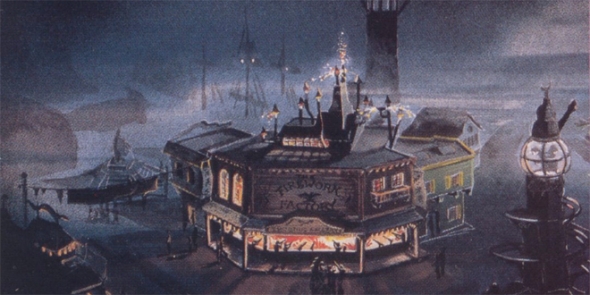
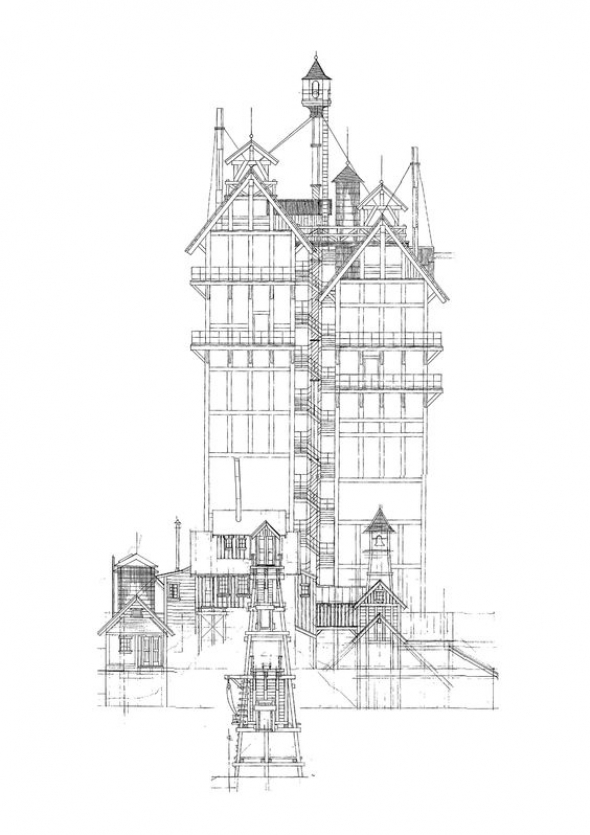
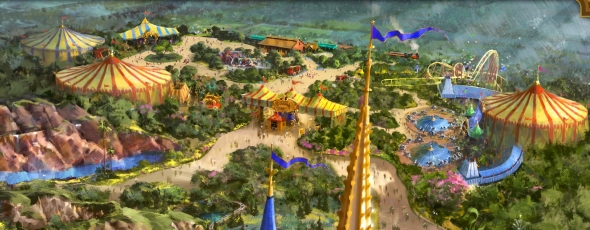
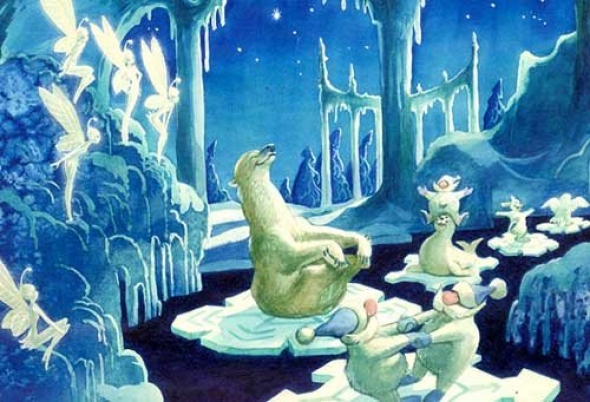
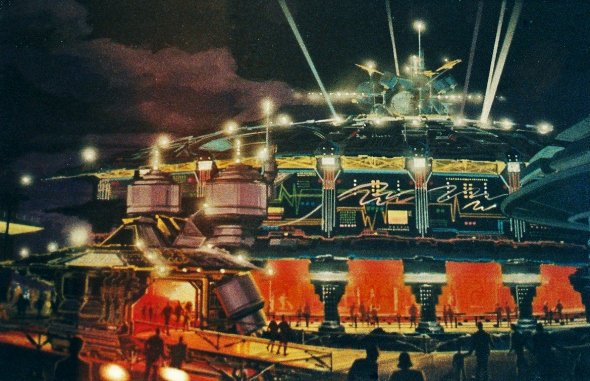
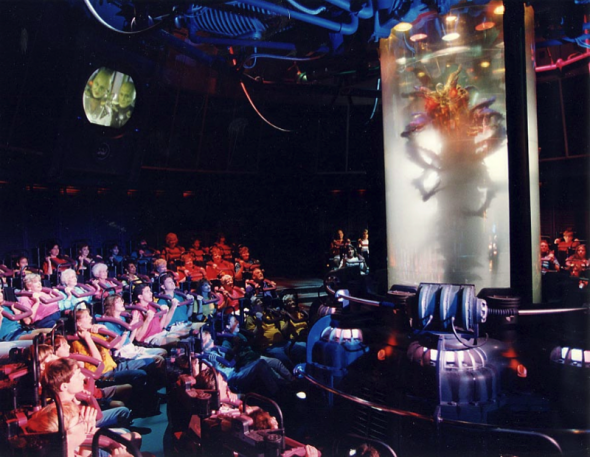
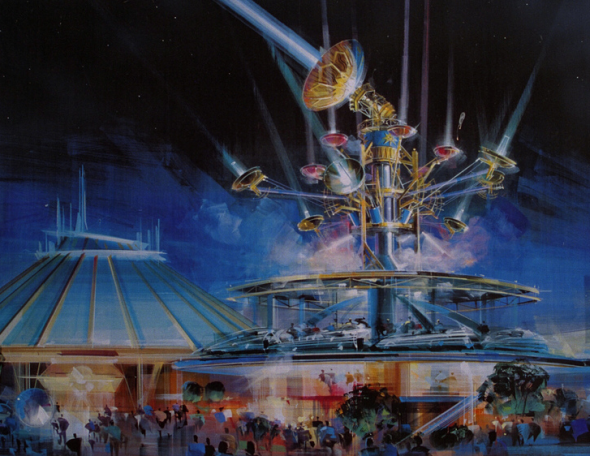

Comments
It is hinted at but I thought I'd mention that the drawings done by Marc Davis for the Snow Palace directly inspired the look of Frozen. That picture of the Icicle Princess is Elsa! Just modernised for today's audience.
Just goes to show that good ideas never truly die.
Ps. I love these in depth articles, great read as always!